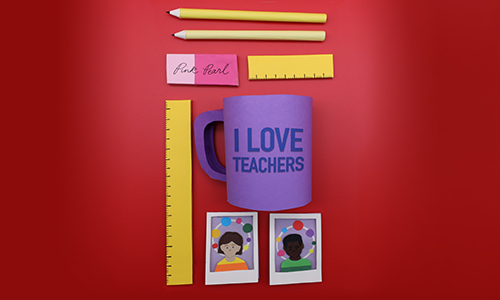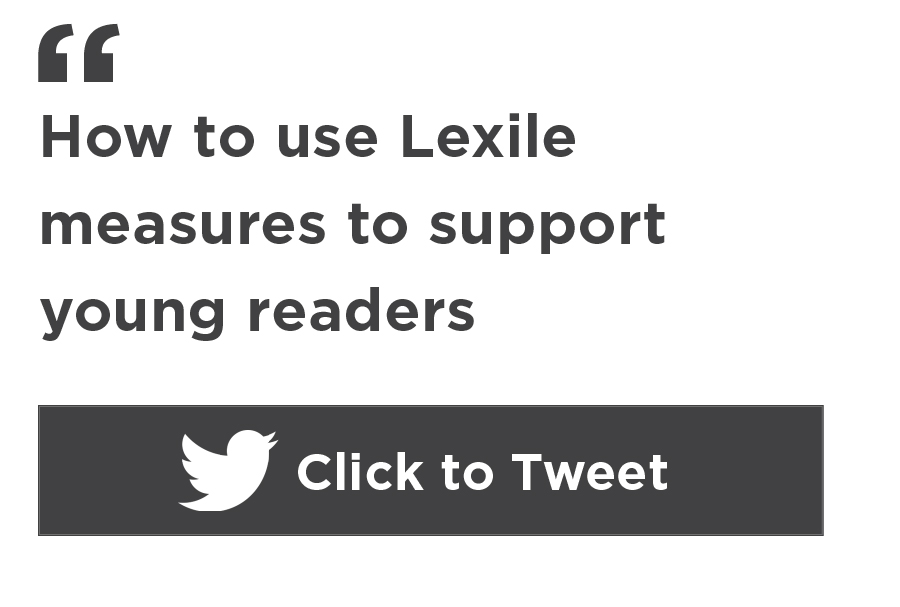
Leticia is in third grade, and she has a good learning team. Leticia is the star player. Then there is her dad, ready to lean in on supporting mostly remote learning this year. Meanwhile, Leticia’s teacher is trying harder than ever to connect with families in a two-way dialogue that we know supports equity. Go, Team Leticia!
After some fall assessments, Leticia’s dad wants to know: What is Leticia’s reading level? As the teacher answers this, she turns to student reports in both MAP® Growth™ and MAP® Reading Fluency™, where she sees data using the MetaMetrics® Lexile® scale. Leticia’s teacher knows that when most people ask about reading level, they are really asking for a way to think about what level of text a student should work in. The first answer? A variety of levels. But that answer’s a little cagey, unless we talk through this a bit more.
As Team Leticia huddles up, there are three things to talk through. First, what does the Lexile score measure? Second, what about access to complex grade-level text? And, finally, what can each team member do with this information?
What does a Lexile score measure?
Did you know that you can get two different Lexiles—and still be teaching the same kid? It’s true.
The original Lexile reading measure is what you see reported with MAP Growth scores, as a range. This Lexile reading measure is about reading for comprehension. It is not about oral reading. When students read to comprehend, they typically don’t need to read out loud, and they often slow down to tune their rate to the task of understanding.
[R]eading levels should not—and cannot—mean limiting kids to reading below-grade-level text.
The new Lexile oral reading measure is what you see reported in MAP Reading Fluency, for oral readers of English. (Read more about this brand-new metric!) The Lexile oral reading measure is about decoding and oral reading fluency. It is not about comprehension. It gauges oral reading fluency by factoring in rate, accuracy, and the oral readability of what was read aloud. When students read out loud, we get a window into their decoding fluency: Are more and more words becoming automatic? But rate and accuracy cannot tell us about deep comprehension.
So, when we want to know about a student’s reading for comprehension, we look to the original Lexile reading measure, from MAP Growth. When we want to know about a student’s decoding and oral reading fluency, we look to the new Lexile oral reading measure, from MAP Reading Fluency. If you have both, like Leticia does, that’s ideal. If you have even one, it’s nice to be clear on what it measures, specifically.
What can we learn if we have both Lexiles?
Leticia has both scores, so Team Leticia can tailor their support with more focus. When the scores don’t match, that’s actually pretty useful information:
- Oral reading > reading for comprehension: Let’s say Leticia’s Lexile oral reading measure is higher than her Lexile reading measure. Aha! Leticia may be reading quickly and accurately but not attending to meaning. This is sometimes called a “word caller” profile.
Take-home message: Leticia needs more focus on reading for comprehension.
- Oral reading < reading for comprehension: Now let’s assume the opposite, that Leticia’s Lexile oral reading measure is lower than her Lexile reading measure. What then? Leticia probably has strength in language comprehension and background knowledge, and she probably knows to tune her rate down a bit for good comprehension. But she may struggle with quick and accurate oral reading when she’s first given a book or passage.
Take-home message: Leticia needs more focus on oral reading fluency.
What about access to complex grade-level text?
In a previous blog post, I focused on how reading levels should not—and cannot—mean limiting kids to reading below-grade-level text. It’s an equity issue. Were she to have no time working with juicy text that is at least on grade level, Leticia would lose opportunities for growth in vocabulary, knowledge, and language comprehension. Her teacher will design appropriate scaffolds and supports for kids who need them as the class tackles that complex grade-level text. She’ll look at Lexile data and use it to inform who needs what, to get everyone access to the same challenging text.
Take-home message: Regardless of Leticia’s reading level, Dad can get into an engaging, tough novel with her. If she can’t read it herself, then Dad can read it to her. That way she still gets access to all that vocabulary, knowledge, and language comprehension. Here’s one I love from high in the third-grade zone for difficulty: Rita Williams-Garcia’s One Crazy Summer. In this award-winning book, Mom is a Black Panther in 1968 Oakland. It’s terrific content for talking about with Dad.
So what can parents and teachers really do with a Lexile?
Leticia’s dad or grandparent might like to use the Lexile Find a Book site to find books at an appropriate level that will be interesting to her. That site uses the original Lexile reading framework, the one that measures students and texts on reading for comprehension. There are two ways to approach the reading, depending on circumstances.
- Search by grade. There are times when an adult can share and discuss the reading. For that purpose, start at least in that grade-level zone of difficulty, even if the child will need some help to make it through text that is hard. Talk through words and ideas together.
- Search by measure. Sometimes busy adults want a book that a child can read pretty independently. When the purpose is independent enjoyment or building knowledge, then finding a book near the student’s Lexile reading measure can be a fine idea.
Team Leticia can also use information on Leticia’s oral reading level. With MAP Reading Fluency, that score is given together with this context: What is the typical oral readability of texts in third grade? If the student’s Lexile oral reading measure is below the range of what they will probably encounter in this grade, then working on oral reading fluency is a great idea.
Work on it with what text? Leticia’s teacher could focus on passages that include the phonics rules and patterns being taught. Her dad could set up opportunities for Leticia to practice reading—more than twice—from text that she initially read not so fluently. Think performance: After practicing, how great can Leticia sound at reading a passage aloud?
Let’s go!
It’s hard to beat a great teacher, or a great dad. Imagine what could happen when both—plus good data—are brought together as teammates supporting a young star player. Forget the NBA bubble. My money is on teams like Team Leticia going all the way.








